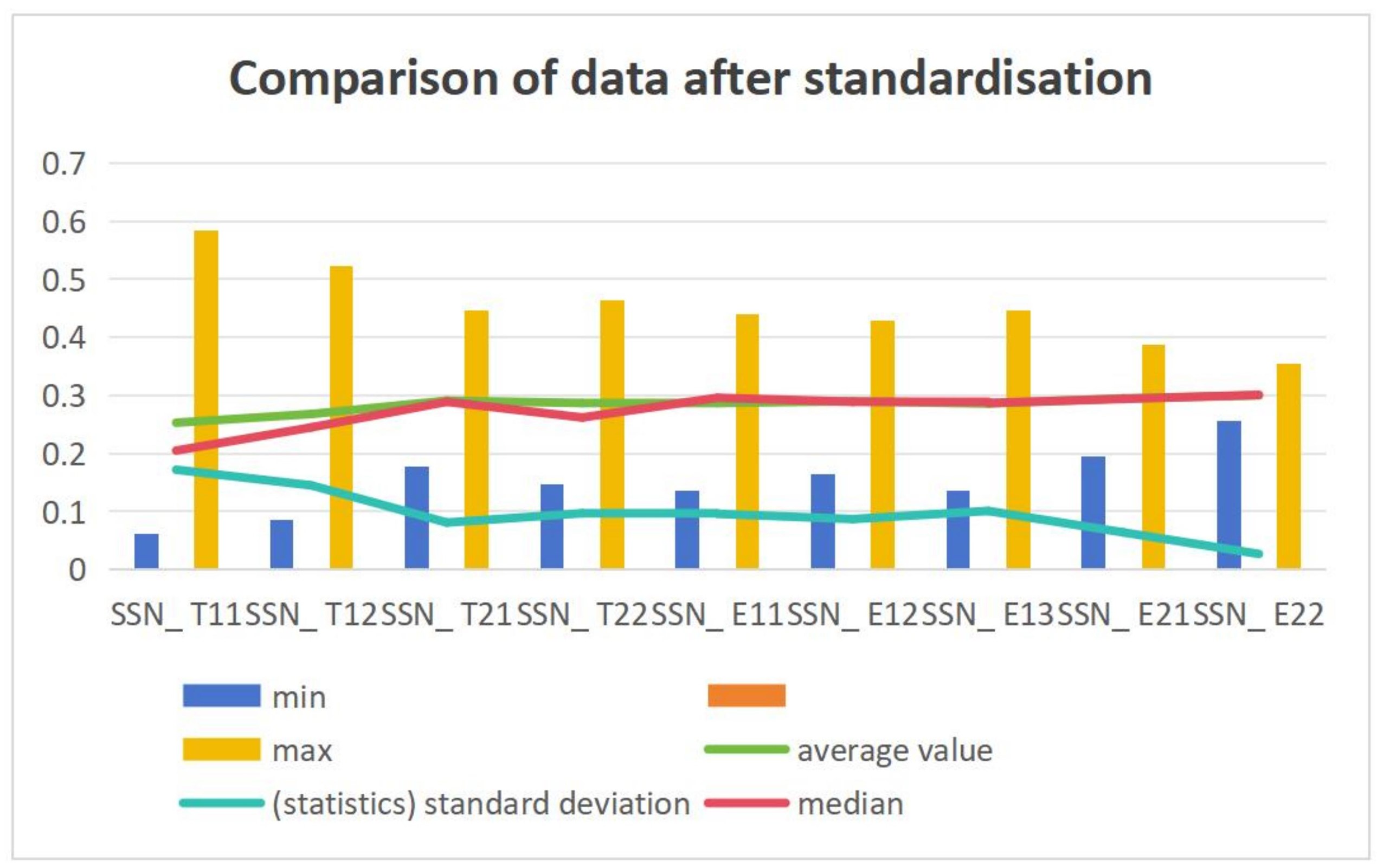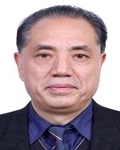


A study of climate resilience in urban tree species of Peninsular Malaysia
Vol 4, Issue 2, 2023
Download PDF
Abstract
Climate change poses significant challenges to Malaysian cities, including heat stress, which high humidity and the urban heat island effect exacerbate. While trees effectively reduce temperatures and improve microclimates, potential sensitivities to climate change impacts require careful species selection. Experts assessed the resilience of 220 tree species from urban and rural areas of Malaysia using eight criteria, based on a list compiled from four sources. We then categorised the species by sensitivity for four urban landscape types. Saltwater sensitivity had the highest proportion of sensitive species, followed by inundation sensitivity. Considering regional climate projections, planners should prioritise species with low inundation sensitivity. Data availability for saltwater, inundation, and high-temperature sensitivities was limited but adequate for the remaining criteria, with susceptibility to predation, parasitism, or disease, and sensitivity to storm conditions being of concern. Urban planners should integrate these criteria into decision-making to ensure climate-smart urban design. Given that our knowledge about the effects of climate change on tree species will advance and should be documented, we developed an open-collaborative online database that assists stakeholders in selecting suitable species for various sites in Malaysia. Moderators will review submissions to ensure consistent application of criteria and alignment between selected answers and supporting information. Assessors can contribute to quality control by voting for assessments they agree with. Our research emphasises the importance of proactively addressing climate change challenges in urban areas and underscores the value of informed decision-making to enhance the resilience of urban tree populations.
Keywords
References
- Lauwaet D, De Ridder K, Saeed S, et al. Assessing the current and future urban heat island of Brussels. Urban Climate 2016; 15: 1–15. doi: 10.1016/j.uclim.2015.11.008
- Estrada F, Botzen WJW, Tol RSJ. A global economic assessment of city policies to reduce climate change impacts. Nature Climate Change 2017; 7(6): 403–406. doi: 10.1038/nclimate3301
- Heaviside C, Macintyre H, Vardoulakis S. The Urban Heat Island: Implications for Health in a Changing Environment. Current Environmental Health Reports 2017; 4(3): 296–305. doi: 10.1007/s40572-017-0150-3
- Heaviside C, Vardoulakis S, Cai XM. Attribution of mortality to the urban heat island during heatwaves in the West Midlands, UK. Environmental Health 2016; 15(S1). doi: 10.1186/s12940-016-0100-9
- Orlov A, Sillmann J, Aunan K, et al. Economic costs of heat-induced reductions in worker productivity due to global warming. Global Environmental Change 2020; 63: 102087. doi: 10.1016/j.gloenvcha.2020.102087
- Zhao M, Huang X, Kjellstrom T, et al. Labour productivity and economic impacts of carbon mitigation: a modelling study and benefit-cost analysis. The Lancet Planetary Health 2022; 6(12): e941–e948.
- Raymond C, Matthews T, Horton RM. The emergence of heat and humidity too severe for human tolerance. Science Advances 2020; 6(19). doi: 10.1126/sciadv.aaw1838
- Toosty NT, Hagishima A, Bari W, et al. Behavioural changes in air-conditioner use owing to the COVID-19 movement control order in Malaysia. Sustainable Production and Consumption 2022; 30: 608–622. doi: 10.1016/j.spc.2022.01.001
- U.S. Energy Information Administration. Air conditioning accounts for about 12% of U.S. home energy expenditures. Available online: https://www.eia.gov/todayinenergy/detail.php?id=36692 (accessed on 28 January 2022).
- de Kleyn L, Mumaw L, Corney H. From green spaces to vital places: connection and expression in urban greening. Australian Geographer 2019; 51(2): 205–219. doi: 10.1080/00049182.2019.1686195
- Lindén J, Fonti P, Esper J. Temporal variations in microclimate cooling induced by urban trees in Mainz, Germany. Urban Forestry & Urban Greening 2016; 20: 198–209. doi: 10.1016/j.ufug.2016.09.001
- Zölch T, Maderspacher J, Wamsler C, Pauleit S. Using green infrastructure for urban climate-proofing: An evaluation of heat mitigation measures at the micro-scale. Urban For. Urban Green 2016; 20: 305–316. doi: 10.1016/j.ufug.2016.09.011
- Kardan O, Gozdyra P, Misic B, et al. Neighborhood greenspace and health in a large urban center. Scientific Reports 2015; 5(1). doi: 10.1038/srep11610
- Adaptation Fund. Nature-based Climate Adaptation Programme for the Urban Areas of Penang Island. Available online: https://www.adaptation-fund.org/project/nature-based-climate-adaptation-programme-for-the-urban-areas-of-penang-island-2/ (accessed on 17 June 2022).
- CBD Secretariat. Country profiles: Malaysia—Main Details. Available online: https://www.cbd.int/countries/profile/?country=my (accessed on 20 June 2022).
- Saw LG, Chung RCK. The flora of Malaysia projects. Rodriguésia 2015; 66(4): 947–960. doi: 10.1590/2175-7860201566415
- Ng FS, Low CM, Sanah MAN. Endemic Trees of the Malay Peninsula. Research Pamphlet Issue 106. Forest Research Institute Malaysia; 1990.
- McPherson EG, Berry AM, van Doorn NS. Performance testing to identify climate-ready trees. Urban Forestry & Urban Greening 2018; 29: 28–39. doi: 10.1016/j.ufug.2017.09.003
- Liu M, Zhang D, Pietzarka U, et al. Assessing the adaptability of urban tree species to climate change impacts: A case study in Shanghai. Urban Forestry & Urban Greening 2021; 62: 127186. doi: 10.1016/j.ufug.2021.127186
- Marchin RM, Backes D, Ossola A, et al. Extreme heat increases stomatal conductance and drought‐induced mortality risk in vulnerable plant species. Global Change Biology 2021; 28(3): 1133–1146. doi: 10.1111/gcb.15976
- Jabatan Landskap Negara. Garis Panduan Landskap Negara Edisi 2. Available online: https://issuu.com/nationallandscapedepartment/docs/garis_panduan_landskap_negara_e2 (accessed on 27 May 2022).
- Ossola A, Hoeppner MJ, Burley HM, et al. The global urban tree inventory: A database of the diverse tree flora that inhabits the world’s cities. Global Ecology and Biogeography 2020; 29(11): 1907–1914. doi: 10.1111/geb.13169
- Corner EJH. Wayside Trees of Malaya in Two Volumes, 3rd ed. Malayan Nature Society; 1988.
- IUCN. The IUCN red list of threatened species. Version 2021-3. Available online: https://www.iucnredlist.org (accessed on 1 June 2021).
- MyBIS. Malaysia biodiversity information system. Available online: https://www.mybis.gov.my/one/ (accessed on 1 June 2021).
- Yong WSY, Chua LSL, Lau KH, et al. Malaysia Red List: Plants of Peninsular Malaysia. Parts I and II. Forest Research Institute Malaysia;2021.
- Czaja M, Kołton A, Muras P. The complex issue of urban trees—Stress factor accumulation and ecological service possibilities. Forests 2020; 11(9): 932. doi: 10.3390/f11090932
- Nakamura F. Riparian forests and climate change: Interactive zone of green and blue infrastructure. In: Green Infrastructure and Climate Change Adaptation: Function, Implementation and Governance. Springer Nature Singapore; 2022. pp. 73–91.
- Toscano S, Branca F, Romano D, et al. An evaluation of different parameters to screen ornamental shrubs for salt spray tolerance. Biology 2020; 9(9): 250. doi: 10.3390/biology9090250
- Lee ATK, Carr JA, Ahmad B, et al. Reforesting for the climate of tomorrow. In: Recommendations for Strengthening Orangutan Conservation and Climate Change Resilience in Kutai National Park, Indonesia. IUCN; 2019.
- Foden WB, Butchart SHM, Stuart SN, et al. Identifying the world’s most climate change vulnerable species: A systematic trait-based assessment of all birds, amphibians and corals. PLoS ONE 2013; 8(6): e65427. doi: 10.1371/journal.pone.0065427
- Carr JA, Outhwaite WE, Goodman GL, Foden WB. Vital but Vulnerable: Climate Change Vulnerability and Human Use of Wildlife in Africa ’s Albertine Rift. IUCN; 2013.
- Tognelli MF, Lasso CA, Bota-Sierra CA, et al. Conservation Status and Distribution of Freshwater Biodiversity in the Tropical Andes (Spanish). IUCN International Union for Conservation of Nature; 2016. doi: 10.2305/iucn.ch.2016.02.en
- Pacifici M, Foden WB, Visconti P, et al. Assessing species vulnerability to climate change. Nature Climate Change 2015; 5(3): 215-224. doi: 10.1038/nclimate2448
- Foden WB, Young BE, Akçakaya HR, et al. Climate change vulnerability assessment of species. WIREs Climate Change 2018; 10(1). doi: 10.1002/wcc.551
- Nenzén HK, Araújo MB. Choice of threshold alters projections of species range shifts under climate change. Ecological Modelling 2011; 222(18): 3346–3354. doi: 10.1016/j.ecolmodel.2011.07.011
- Jones MC, Cheung WWL. Using fuzzy logic to determine the vulnerability of marine species to climate change. Global Change Biology 2017; 24(2). doi: 10.1111/gcb.13869
- ACResT. Atlas of climate resilient tree species. Available online: https://www.acrest.com.my/ (accessed on 1 November 2022).
- Which Plant Where. Future proof urban landscape projects with climate-ready species. Available online: https://www.whichplantwhere.com.au/ (accessed on 15 November 2022).
- Forest Research. Right trees for changing climate database. Available online: http://www.righttrees4cc.org.uk/ (accessed on 28 October 2022).
- Castelo S, Carr J, Khamis S, et al. Climate-resilient tree species (Climate-resilient tree species version 1). FigShare. doi: 10.6084/M9.FIGSHARE.22237561.V1
- Burley H, Beaumont LJ, Ossola A, et al. Substantial declines in urban tree habitat predicted under climate change. Science of The Total Environment 2019; 685: 451–462. doi: 10.1016/j.scitotenv.2019.05.287
- IPCC (Intergovernmental Panel on Climate Change). Climate Change 2021: The Physical Science Basis. Contribution of Working Group I to the Sixth Assessment Report of the Intergovernmental Panel on Climate Change. Cambridge University Press; 2023. doi: 10.1017/9781009157896
- Bastin JF, Clark E, Elliott T, et al. Correction: Understanding climate change from a global analysis of city analogues. PLoS ONE 2019; 14(10): e0224120. doi: 10.1371/journal.pone.0224120
- Tang KHD. Climate change in Malaysia: Trends, contributors, impacts, mitigation and adaptations. Science of The Total Environment 2019; 650: 1858–1871. doi: 10.1016/j.scitotenv.2018.09.316
- Mitchell C. Flood resilience—A time for cathedral‐based thinking and action! Journal of Flood Risk Management 2022; 15(1). doi: 10.1111/jfr3.12780
- Reuters. Malaysia floods caused nearly $1.5 bln in losses—govt report. Available online: https://www.reuters.com/article/malaysia-floods-idAFL4N2U81FQ (accessed on 10 February 2022).
Supporting Agencies
Copyright (c) 2023 Sofia Castelo, Jamie A. Carr, Shamsul Khamis, Melissa Sivaraj, Tainan Messina
License URL: https://creativecommons.org/licenses/by/4.0/

This site is licensed under a Creative Commons Attribution 4.0 International License (CC BY 4.0).

Chinese Academy of Sciences, China
Indexing & Archiving
Asia Pacific Academy of Science Pte. Ltd. (APACSCI) specializes in international journal publishing. APACSCI adopts the open access publishing model and provides an important communication bridge for academic groups whose interest fields include engineering, technology, medicine, computer, mathematics, agriculture and forestry, and environment.



.jpg)

.jpg)



